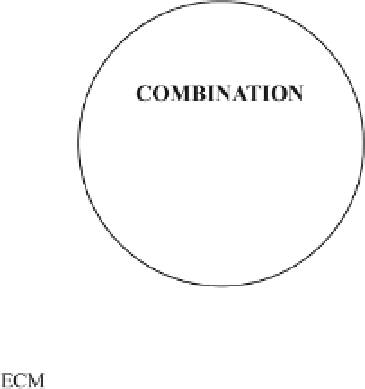Biomedical Engineering Reference
In-Depth Information
Scheme 1
Major aspects of the design of bio-artificial ECM mimics
or proteolytic enzymes, and of physical cues [30], such as pliability and con-
tact guidance, define distinct states of ECM being highly relevant for cells to
interact with. These characteristics can be controlled in vitro by the choice of
matrix components to be combined, by their structural modification, and by
their assembly including the formation of artificial chemical linkages. A sec-
ond most powerful option to influence the features of bio-artificial ECM
consists of the combination with synthetic materials. This includes both the
provision of environmental constraints for pure biopolymer ECM assemblies
and the formation of hybrid matrices combining synthetic and biomolecular
structures.
This review places emphasis on options to modulate the functionality of
ECM biopolymers through immobilization onto polymeric materials exhibit-
ing a variety of physicochemical characteristics. Fundamental features of
ECM will be introduced in a rather condensed fashion, followed by a survey
on the current state of techniques to reconstitute ECM in vitro. In front of
this background, we discuss options to switch biopolymer assembly and ma-
trix functionality by immobilization onto polymer substrates and illustrate
this part of the review with two examples referring to our recent studies. Fi-
nally, current trends towards more advanced bio-artificial matrices will be
surveyed.













